
10th in points allowed, 8th in yards allowed.
Those numbers are seductive. Maybe this Eagles defense wasn’t as bad as we thought. Maybe, counter to conventional wisdom, Juan Castillo doesn’t have to be fired. Maybe he’s already figured things out.
If you feel those sentiments catching up to you, it’s time for an intervention. Total points allowed, total yards allowed are flawed statistics at best. Imparting any meaning to them requires understanding them in the context of a host of other statistical factors.
When we take the whole picture into account, the picture of the Eagles defense doesn’t look so rosy after all.
Opponents
Here’s a list of the Eagles opponents, ranked by offensive efficiency (Football Outsiders DVOA):
- NWE #3
- NYG #7
- DAL #11
- ATL #12
- BUF #16
- SF #18
- WAS #19
- MIA #20
- NYJ #21
- SEA #22
- ARI #28
- CHI #30
- STL #32
The Eagles played one elite offense this season: the Patriots. They only faced one other offense in the top ten, and Juan Castillo could pull a gameplan off the shelf for that one. Same with the Cowboys, who the Eagles faced once with Tony Romo and once without.
Next you have the Falcons, the juggernaut that couldn’t manage a single offensive point against the Giants this weekend, along with the Bills and 49ers, offenses that represent the height of mediocrity. Every other opponent the Eagles faced was as bad — or worse (!) — than the Rex Grossman-led Redskins.
Consistency
If you want to win week in and week out in the NFL, you can’t have wildly variable performances week by week, let alone quarter by quarter.
The Eagles defense had good moments, for sure, especially against the worst NFC East in years. But they could never sustain that success. We lived that roller-coaster ride throughout the season. So it’s unsurprising to note that the defense had the second-worst variance rate of any team in the NFL.
But even more telling is the volatility throughout a single game. The Eagles were 11th in the NFL in points allowed through the first three quarters. But in the fourth, that dropped to 25th.
That wasn’t an anomaly. Castillo’s defense was consistently out-schemed and out-played late in games. The Cardinals, for example, engineered a comeback largely by exploiting coverages that they knew were coming. That will lose you games even when you look alright on the stat sheet.
Situational
Carrying along from inconsistency, it’s worth noting that the Eagles defense wasn’t bad at everything. Much like the Jim Johnson defenses of old, which relied on a bend-but-don’t-break approach, Castillo’s unit had its own pluses and minuses.
Unfortunately, the 2011 Eagles had more of the break-but-don’t-bend qualities.
For example, the defense ranked 8th in the NFL in first downs per drive. That means they stalled out a large number of opponent drives — a positive indicator. That led to the Eagles allowing the 9th-fewest points per drive.
However, these numbers come with large caveats. For starters, the Eagles allowed the second-fewest number of field goal attempts in the league, and opponents converted a league-low 66 percent of those attempts. Some of that is indicative of good defense, some just of luck.
More importantly, despite fewer first downs, the Eagles were below average (19th) in touchdowns allowed per drive. Why? Two reasons. For the second straight season, the Eagles had an atrocious red zone defense (60 percent TDs allowed). The defense also allowed far too many big plays. They were 4th-worst in the NFL in 40-yard plays given up per drive.
Again, some things were great. Jim Washburn’s defense line posted the most sacks in the league. But at the same time, the Eagles were 24th in first downs allowed by penalties (unsurprising), and 22nd in turnovers (surprising). Not enough positives to outweigh the negatives.
* * *
In short, that’s how you can end up with seemingly solid overall points and yards allowed, without actually having a defense good enough to win more than eight games. And it’s also why Juan Castillo needs to go… or at the very least be demoted post-haste.
Photo from Getty.
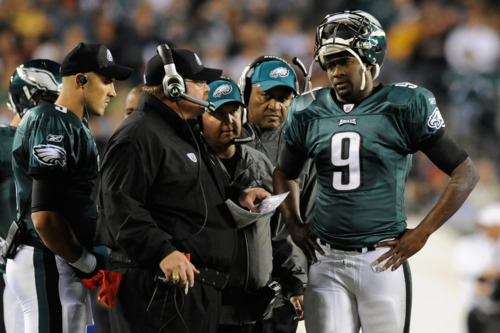


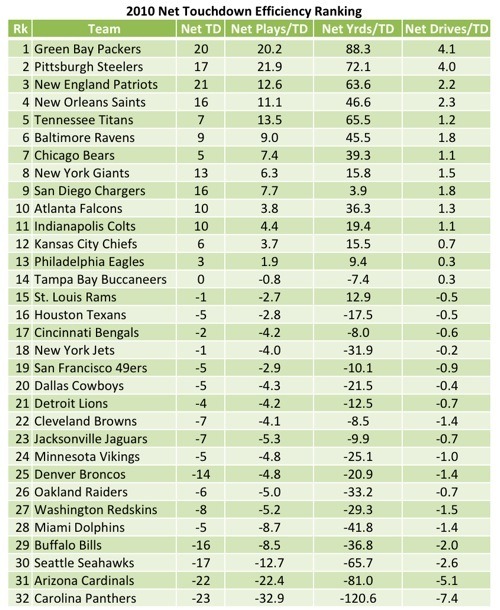

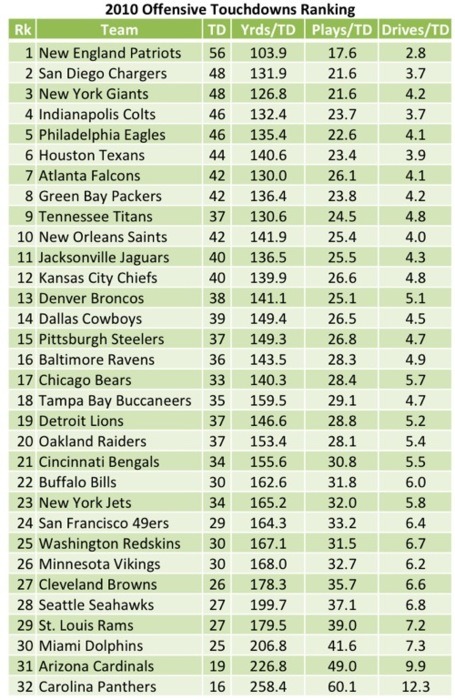
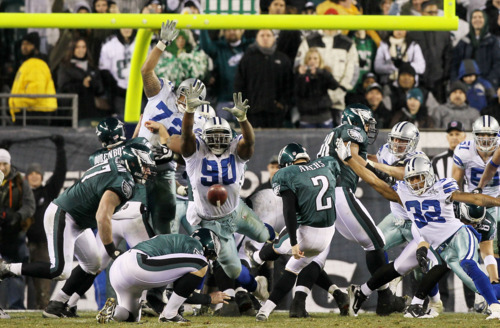
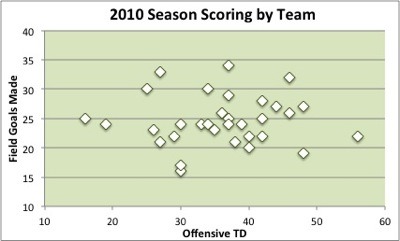 Look at the graph at right. There is simply no correlation, positive or negative, between touchdowns and field goals.
Look at the graph at right. There is simply no correlation, positive or negative, between touchdowns and field goals.